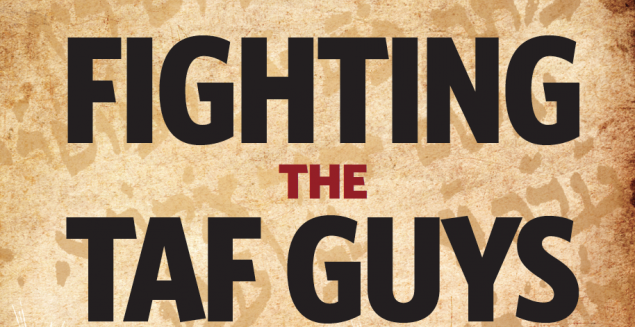By Jack Abramowitz
Shabbos.
There, I said it. Shabbos. Sukkos. Shavuos. Mitzvos. Matzos. Shalosh seudos. Baba Basra. It feels good to get that off my chest.
Readers may not realize how much I’m getting away with here, because at the Orthodox Union the convention is to publish those words as Shabbat, Sukkot, mitzvot, et cetera.* This is a battle I have fought many times over the years. As editor of the OU Torah section of the OU web site, I win some (see “HaShoneh Halachos”1 on OU Torah) and I lose some (see “Mishna Yomit”2 on the same site).
I have heard tales of Sepharadic Jews feeling marginalized by the Ashkenazic majority; that’s how I feel when it comes to my pronunciation. Somehow the fact that I call a citron an “esrog” means that I must love Israel less (because Sepharadic pronunciation has been adopted in Israel) or that I’m a fundamentalist (because those perceived to be fundamentalists often use the Ashkenazic pronunciation).
Differences in dialect—and fighting about them—are nothing new. In the Book of Judges, chapter 12, we are told of a minor civil war against the Tribe of Ephraim. The people of Gilad identified Ephraimites who were trying to flee by asking them to pronounce the word “shibboleth,” meaning a stream. The Ephraimites pronounced it “sibboleth,” (since they could not pronounce the “sh” sound), giving themselves away and thereby falling into the hands of the Giladites.
Well, at least no one has come after me with a sword for saying “Megillas Rus.”
Upbringing aside—or, perhaps because of it—I just don’t understand the Sepharadic pronunciation. A beis is different from a veis. A kaf is different from a chaf. A pei is different from a fei. So why should a taf and a saf be the same? A dagesh (the dot sometimes found in Hebrew letters) has many functions. It can double a letter; for example, a dagesh in the gimmel makes the word “Haggadah,” properly transliterated with two g’s. In a “mapik hei,” the dagesh makes the vowel precede the letter hei, e.g., “Elo-Ah” rather than “Elo-Ha” in Hallel. But what purpose does the dagesh serve in the last letter in Hebrew if it is always pronounced like a t?
And then there’s the issue of the kamatz, the little t-shaped vowel that Ashkenazim pronounce “aw” and Sepharadim pronounce “ah.” The pasach (the straight line) is already pronounced “ah.” Since the vowel symbols, like the trope marks, were designed by the Masoretes3 as an aid to reading the Torah, why would they come up with two vowels to represent the same sound? And how would they determine where to put each one?
Sharing my personal befuddlement is not meant to disparage Sepharadic pronunciation, which is a legitimate, accepted form of the language—but so is Ashkenazic! Can I feel some love in return?
Rabbi Moshe Feinstein addressed this matter several times. In Iggeros Moshe (Orach Chaim 3:5), he writes that both pronunciations are acceptable in halachah to those who use them. As an example, he discusses the chalitzah ceremony, used to dissolve the bond between a widow and her deceased husband’s brother. This ceremony must be performed in Hebrew to be considered valid. A woman who performed chalitzah using one pronunciation would still be considered separated from her brother-in-law, even to members of a community that uses the other. Nevertheless, since we have no way of knowing which modern pronunciation most closely approximates the way our forefathers spoke, Rav Moshe rules that one is absolutely forbidden to change his pronunciation in prayer from the way his family says it. It is not permitted to reject one’s received tradition in favor of another practice that is not necessarily more accurate.
In a recent debate on this topic, a colleague asked me if I really thought that my pronunciation was the most authentic. I informed him that I do not. (Surprised?) Honestly, I think that the Yemenite pronunciation—from which we get “brith milah,” “kashruth” and “beth Israel”—is probably closer to the mark than either the Sepharadic or the Ashkenazic pronunciation.
Ultimately, what’s important is that Hebrew is Lashon Hakodesh—the Holy Language—which is most suitable for Torah study and prayers, however one pronounces it.
So forgive me if I feel a little strongly about this matter. I don’t begrudge others their “metivta” or their “pat Yisrael,” so please don’t try to take my kesubos away.
Rabbi Jack Abramowitz is the editor of the OU Torah section of the OU web site. He is the author of five books, including The Tzniyus Book. His latest work, The Taryag Companion, is available from OU Press as well as on Amazon.
*Author’s note: The entire point of this article is how authors feel when editors change transliterations, attributing to us pronunciations that we ordinarily would not use. The topic of this piece notwithstanding, Jewish Action is insisting on the four-syllable “Sepharadic” for this piece rather than “Sephardic,” which I would actually say. The irony is not lost on me.
*Editor’s Note: This magazine’s policy has always been to use Sepharadic pronunciation unless an author is known to use Ashkenazic pronunciation.
Notes
1. “HaShoneh Halachos” is an OU Torah e-mail program run by the author (sign up today at www.ou.org/torah/halacha-series/hashoneh-halachos), whose name comes from a Talmudic dictum. It means “the one who learns Jewish laws.” Alternately, “HaShoneh Halachot.”
2. Mishna Yomit is another OU Torah program, which features a daily teaching from the Mishnah.
3. Masoretes were ancient scribes who devised the system of vowels and trope, and set the definitive Biblical canon called the Masoretic Text.
To see a related article on this topic, visit http://jewishaction.oudev.org/03/2014/real-story-hebrew-pronunciation/.
